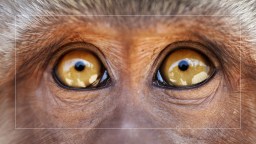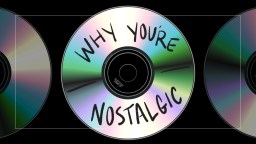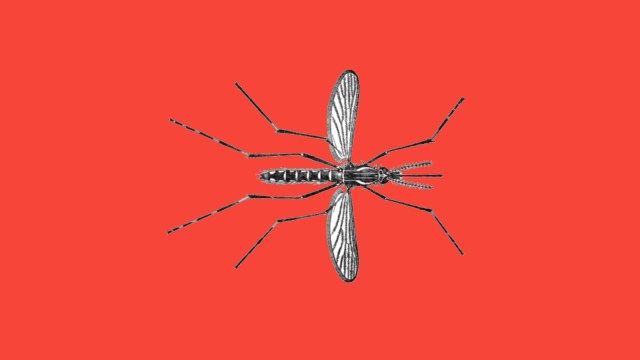Humans are not “tribal”

- Over the past several years, the conflicts we see around us — particularly political ones — are blamed on humanity’s instinct for tribalism.
- But this is wrong. Humanity did not evolve with an “us vs. them” mentality.
- Solving society’s problems requires that we first diagnose them correctly.
More than 200 million people were killed in the 20th century due to war and acts of genocide. Many of these conflicts were rooted in ethnic, national, religious, political, or other forms of identity-group conflict. The 21st century is already filled with similar horrors. For many scholars and much of the public, this pattern of between-group conflict emerges directly from humanity’s deep, evolved sense of “us” vs. “them.” To state it simply, human nature is “tribal.” It’s how we built cities, nations, empires. It’s also how each one of those things has crumbled.
But this is not true. Human intergroup conflicts and how they relate to human nature are neither about being “tribal” nor about some evolved, fixed hostility between “us” and “them.”
Humanity, the great classifier
Humans are great at classifying things, and each other, into types and groups. We generalize from existing knowledge about familiar persons and groups and apply these criteria to new people we see or meet, making the amazingly complex human social landscape easier to navigate. This “social hack” for daily life evolved over the past million years because who we meet and how we think about them and interact with them is among the biggest daily challenges to successfully being human.
This classifying capacity starts with babies. By nine months of age, infants’ heart rates go up when they see strangers. But what counts as a “stranger” depends on who the infant has seen, heard, and interacted with previously. Their reactions are structured not only by what people look like, but on social context and experience. Infants classify and respond primarily to actions more than faces or colors or other markers, and especially preferentially to one kind of action: niceness.
This should not be a surprise. Infants from very early on tend to respond better to people who act prosocially, that is, who are nice to others. This can be those who are nice to the infants or those who they see being nice to others. It is a powerful system, so much so that infants even appear to prefer non-humans, like animals and puppets, who are nicer to others as well. However, before the first year or so, infants don’t form mental maps of clusters of people; they don’t seem to distinguish between groups of people, just individuals. Infants don’t automatically make “us” and “them” categories; the human mind must learn how to “do” group classifications.
We did not evolve to be “us vs. them”
While humans do not come with a ready-made way to create divisions of humanity, we have the capacity to classify and develop mental shortcuts to use classifications once we have created (or learned) them. Most importantly, categories like “us” and “them” are not set in stone; they are flexible and do not necessarily set up a conflictual relationship.
Neuroscientists recently reviewed a wide range of data on how the brain works when we categorize people into groups. They found that the biological bases of the classification processes show that specific in-group and out-group categories are not “hard-wired.” Rather, our neurobiology reflects a highly flexible system that can represent the self and others. Additionally, how “us” and “them” are divided can shift quickly and dynamically. This is a very different reality from the assumption of a natural, inherent “us vs. them” mentality.
People can be awful to one another, inside and outside their own groups. But that is a capacity, not an obligation, and it is not even the most common pattern of what humans have done over time. Indeed, humans did not evolve an “us vs. them” antagonism. Recent research on the evolution of warfare and intergroup conflict demonstrate that, while violence between groups did occur across human evolutionary history, “there is insufficient conclusive material evidence from the Pleistocene to see warfare as having been a principal driving force for human evolution.” In fact, related work demonstrates “our capacity to have harmonious interdependent relationships that cross group boundaries is an important aspect of our species’ success.”
Hundreds of thousands of years ago, human groups were reaching out to one another, exchanging knowledge and customs, and making social bonds at least as much, if not more, than they were fighting one another. There is evidence that stones and minerals, knowledge about the use of fire and other cultural behaviors, as well as genes, spread between many communities across our histories. Other work on earlier humans demonstrates that an amazing capacity for compassion and prosocial relations is as central between groups as it is within groups. Decades of study of intergroup dynamics in primate societies, human foraging groups, and small scale societies reveals that natural selection has shaped a greater reliance on tolerant between-community relationships in humans than in any other primate species (or possibly any other mammalian species).
Even the argument that the “us vs. them” mode of existence came into being with the evolutionarily recent advent of agriculture, cities, states, and nations is not correct. Humans are neither Hobbesian beasts nor Rousseauian egalitarians; we are a species that is characterized by between-group relations that are complex and dynamic, good and bad. There is no doubt that between-group conflict had a role in our evolution. But the fossil and archaeological evidence casts substantial doubt on whether such conflict was prevalent at the level and pervasiveness to support an “us vs. them” human nature argument.
The trouble with “tribal”
The final flaw in the “tribal nature” view is the fact that the actual term “tribal” has nothing to do with an “us vs. them” evolutionary process.
Across the former colonial world, the term “tribe” was and is often used to identify a societal structure that is “older,” more “primitive,” and less civilized than European forms of society. Used in this manner, the term carries misleading historical and cultural assumptions about “savages” and a related idea about ancient in-group versus out-group behavior. The use of the word “tribe” in this manner is troublesome and comes directly from the ugly, genocidal, colonial past with a set of built-in assumptions about Indigenous peoples that is biased, incorrect, and racist.
In reality, the term “Indian Tribe” in the U.S. has a legal definition relevant to agreements between the federal government and the various sovereign Indigenous peoples’ nations. For Native peoples in the U.S., the words “tribe” and “nation” are generally interchangeable and can hold very different meanings. In Canada, the term for the Indigenous peoples is First Nations, Métis, and Inuit. In Mexico, the preferred terms are indígena, comunidad, and pueblo. The terms “tribe” and “tribal” have no place as descriptors in discourse about human nature or human evolution.
What explains conflict?
Too many scholars and popular voices remain committed to the view that the evolution of humanity has been, in large part, driven by the patterns of in-group cohesion and out-group conflict. They are wrong. The majority of current research into humans and our history refutes the idea that deep-seated xenophobia (“us vs. them”) is the central factor in human evolution. The view that human groups evolved to fight it out, hate one another, and live the “in-group good, out-group bad” lifestyle is simply not true.
But that does not mean humans are naturally peaceful or always getting along. No other species creates cash economies and political institutions, changes planet-wide ecosystems in a few generations, builds cities and airplanes, arrests and deports its members, drives thousands of other species toward extinction, and intentionally hates and decimates other groups of humans. But why all this is the case is not a simple “us vs. them” story.
Over the last few hundred millennia, humans have developed societies too large for people to know and recognize one another individually. Members of such societies depend on markers of identity to spot compatriots — clothes, languages, habits, cuisines, and belief systems. Identity and markers of identity are central to the human experience. But identity being important is not synonymous with out-group hate or conflict between groups. Yes, group identity can be used to generate hatred, but it is also used in many other ways. “Us vs. them” is neither necessarily conflictual nor set in stone.
Today, conflict between groups, peoples, and identity clusters are entangled with extreme economic inequality and the ongoing violence of nationalism, religious conflict, racism, and sexism — all complex realities with histories, dynamic social processes, and multiple, often different, factors shaping outcomes. There is no simple “natural” explanation for the messes we create.
How we talk about society’s problems matters. Invoking the notion of “tribalism” for the world’s current problems is misleading at best and insulting at worst.





